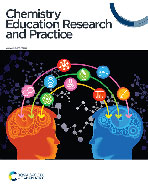Teaching crystal structures in undergraduate courses: a systematic review from a disciplinary literacy perspective
Abstract
Teaching engineering students how to effectively communicate using the language, representations, and tools specific to their discipline is important to their development as practitioners in their respective fields. This article describes a literature review of learning activities intended to teach crystal structure and crystallography and explores the extent to which educators implement elements of disciplinary literacy. We categorized the purpose of the paper, what the students are asked to do, the representations used in the activities, and the learner roles that the activities support. We observe that a majority of the papers engage students in disciplinary practices and support many, but not all aspects of disciplinary literacy. Instructors use a variety of representations in presenting concepts and ask students to interact with the learning activities to recount information or interpret results. However, we find that the activities rarely ask students to synthesize new information or evaluate their information in any wider context. We suggest that instructors should aim to implement the entire range of learning roles, and employ more critical socio-cultural approaches when designing learning activities to make the sciences accessible to a more diverse population of learners.


 Please wait while we load your content...
Please wait while we load your content...